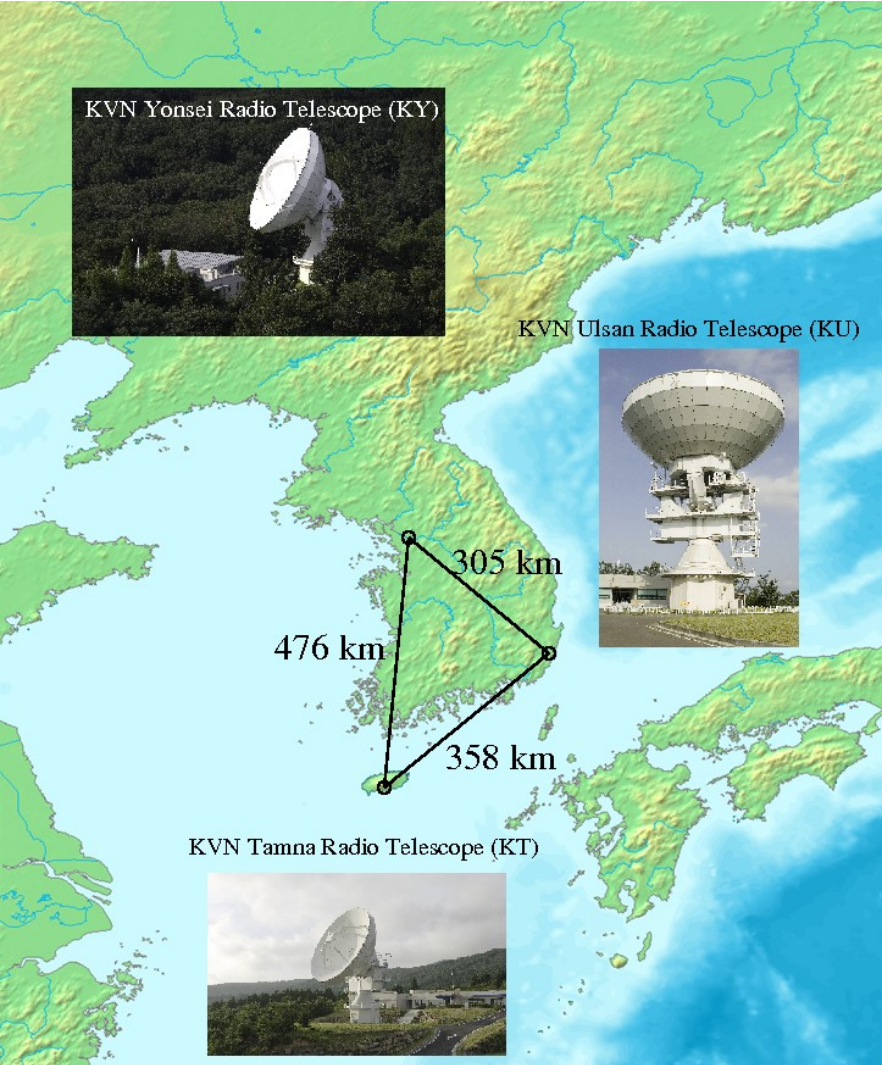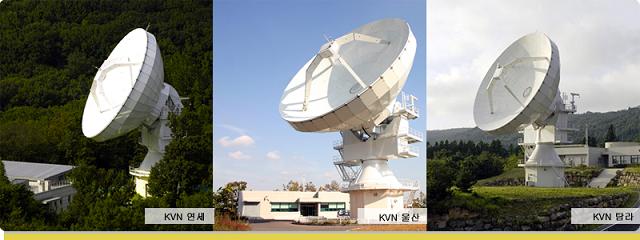KVN (Korean VLBI Network)


The Korean VLBI Network (KVN) is a very long baseline interferometry (VLBI) network in Korea operating at millimeter wavelengths. (Lee et al. 2014, The Astronomical Journal, 147, 77) It consists of three 21-m radio telescopes located in Seoul, in Ulsan, and on the Jeju Island, Korea: KVN Yonsei Radio Observatory (KY)(Lee et al. 2011, Publications of the Astronomical Society of the Pacific, 123, 198), KVN Ulsan Radio Observatory (KU), and KVN Tamna Radio Observatory (KT). The baseline lengths of the KVN are 305~476 km. The KVN produces an effective spatial resolution equivalent to that of a 500-km radio telescope. All three antennas have an identical design and are equipped with a quasi-optical system that allows simultaneous observations at 22, 43, 86, and 129 GHz (Han et al., 2008, International Journal of Infrared and Millimeter Waves 29, 69~78). Since 2013-08, we have operated the KVN Ulsan at 6.7 GHz in single-dish and VLBI modes, mainly for observations toward 6.7-GHz class II CH3OH masers. A GPS receiver was installed at each KVN station. By estimating the atmospheric wet delay and total electron content over all KVN stations, we improved the accuracy of phase referencing and astrometric observations.
The KVN was built by Korea Astronomy and Space Science Institute (KASI) for achieving the main goals
- to study the formation and death of stars with observing water (H2O), methanol (CH3OH), and silicon monoxide (SiO) masers at high resolutions.
- to investigate the structure and dynamics of our own Galaxy by conducting highly accurate astrometric VLBI observations toward the galactic radio sources.
- to study the nature of active galactic nuclei (AGN) and their population at high frequencies.
- The KVN as a dedicated-VLBI network also aims to study the spectral and temporal properties of transient sources such as bursting star-forming regions, intra-day variable compact radio sources, gamma ray flaring AGNs, etc by conducting systematic multi wavelength monitoring campaigns
Reference : Kim et al. 2004, Proc. 7th Symp. EVN, 281 / Lee et al. 2011, PASP, 123, 1398 / Lee et al. 2014, AJ, 147, 77